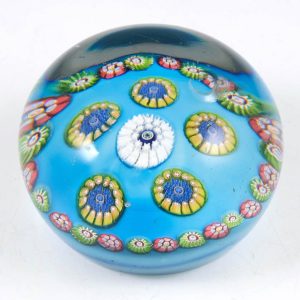- Home
- Products
All Categories
- Blog
- Wish List
- My Account
- Order History
- Basket

Mdina Glass, Val St Lambert, Sam Herman and More.
As with any popular creative movement, art glass production was not restricted to a few centres of excellence.
The Low Countries proved particularly fertile ground. Floris Meydam, Andreis Copier and their cohorts produced many pieces at the Leerdam Glasfabriek factory under the direction of P M Cochius, where the predilection was for heavy, thick set pieces. Readily identifiable pieces include substantial ash trays and vases made in abstract shapes from black or dark grey glass; these are invariably decorated with the deliberate inclusion of air bubbles to give contrasting highlights. Meydam also favoured a combination of blue, green and white colouring for smoothly contoured but still sturdy pieces.
More colourful were the items made in Maastricht at the Kristalunie factory. Jacob Rozendaal was the leading designer in Limburg for nearly two decades, producing optic vases, stemware, cut glass and utilitarian domestic products before moving to The Hague in the late 1930’s. In later years Max Verboeket took over Rozendaal’s role, evolving the house style of whole-coloured, iridescent pieces in to more the more subtly coloured Carneval stemware range and the lighter composition of Anraclet and Tarantella vases. He also introduced the Antique range in the early 60’s, with pieces based on Roman and Etruscan designs, many of which were made in a distinctive emerald green colour and showed the influence of earlier Leerdam material made by Meydam.
Over the border in Belgium the Royal Belgian Glassworks of Val Saint Lambert in Seraing was producing classically styled vases from flashed and cut glass that echoed English Victorian wares in their use of cranberry, amber and pale green and blue colouring, but given a modern twist with the use of unconventionally shaped facets, slices and ground features. The Durobor Company in Soignies made many pieces of contemporary clear crystal stemware and tumblers from the 1920’s onward.
To the east, Tarnowiec in Silesia, Poland was the source for a wide range of art glass vessels. Conventional shapes and forms were given a modern twist with the use of abstract decorative patterns from bold primary colours through marbled transitions to simplistic black and white pieces which were particularly effective on lipped vases.
And finally Romania, where Mihai Topescu and Ion Tamaian were the leading lights of the movement right up to the latter part of the 20th century, producing avant garde sculpted pieces from a signature palette of bold colours and strident patterns reminiscent of Gio Ponti’s post-war Italian wares with their brash, pop-art temperament.
So, almost wherever you care to look across Europe, exponents of art glass creativity were held in thrall by the opportunities granted to them by its inherent freedom of expression, and as a group produced a significant, sometimes striking and always collectable canon of work.
Showing 1–100 of 212 results



































































































